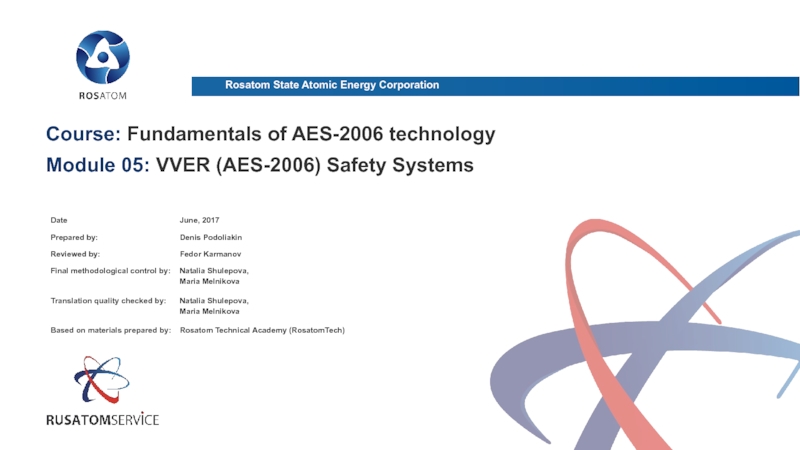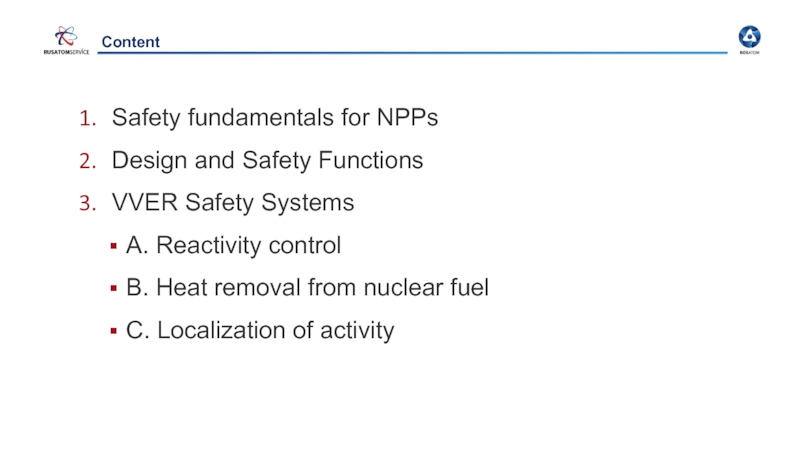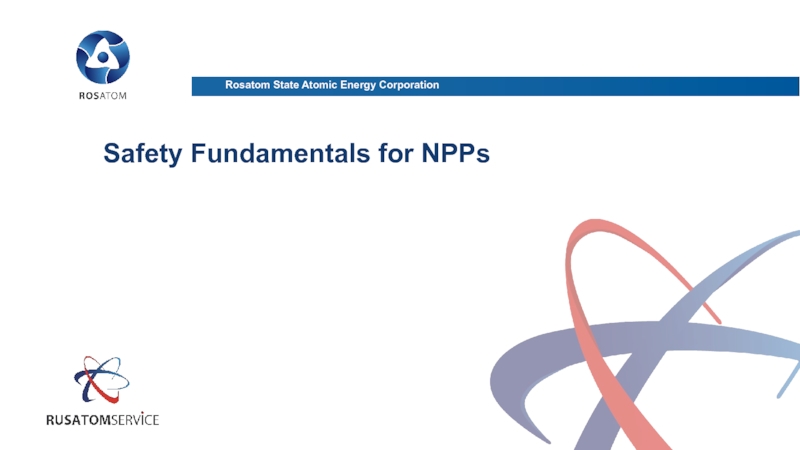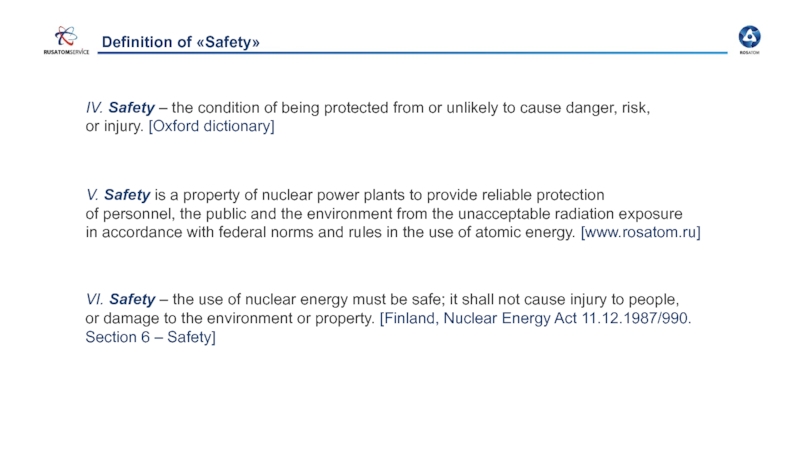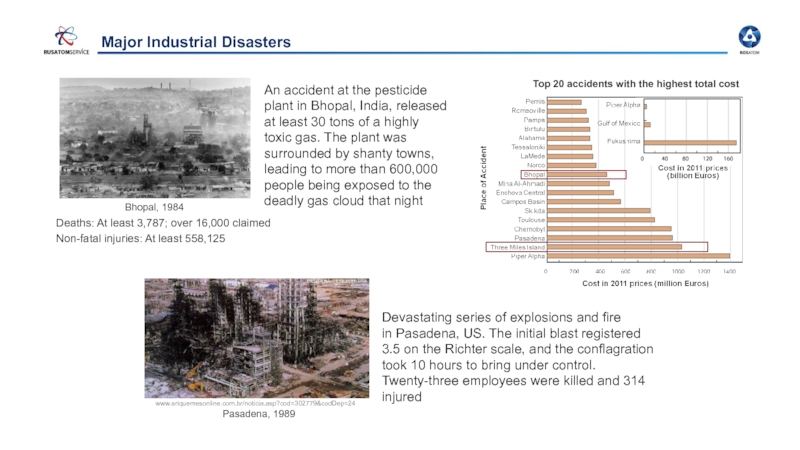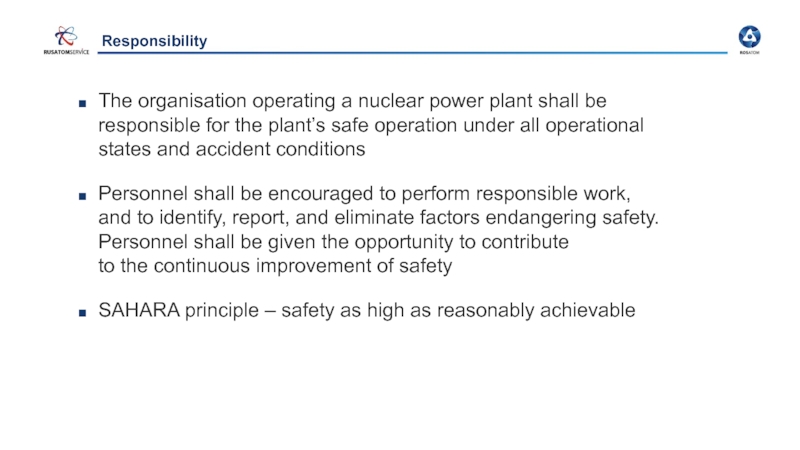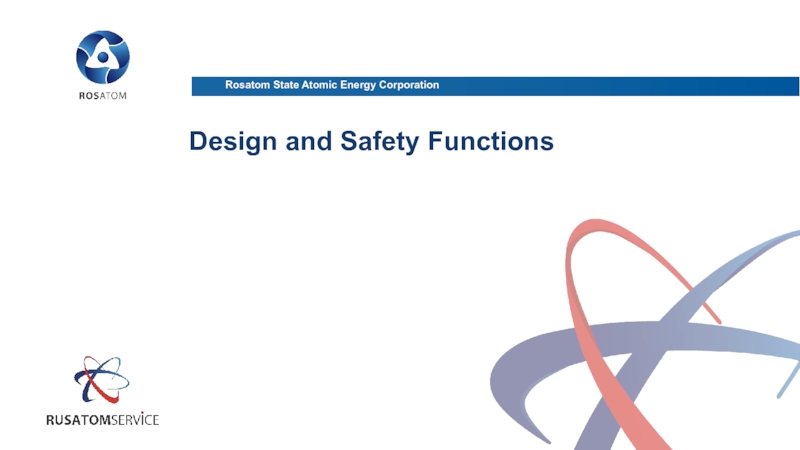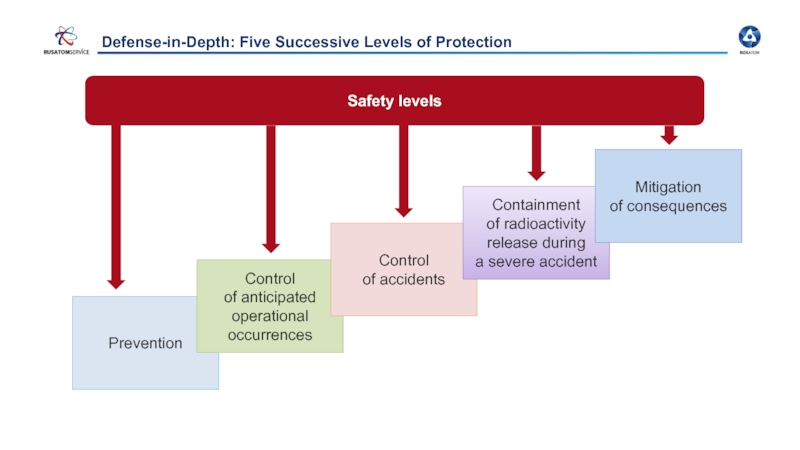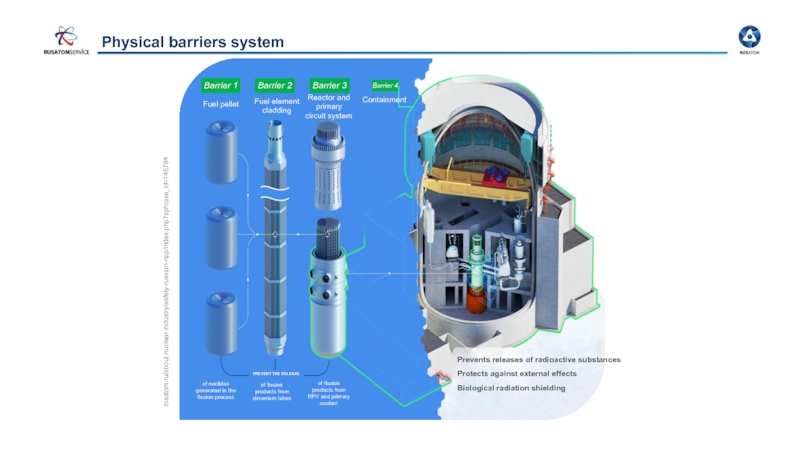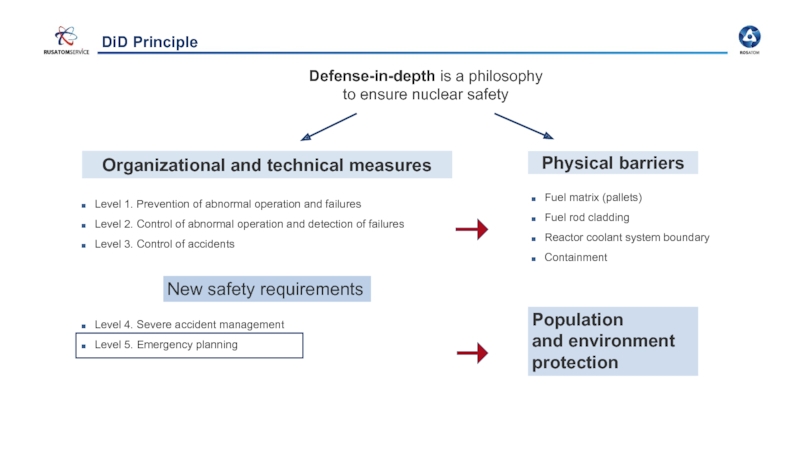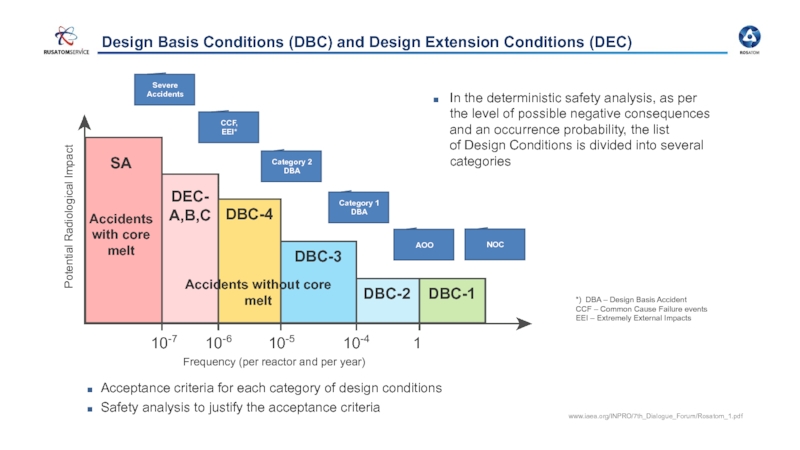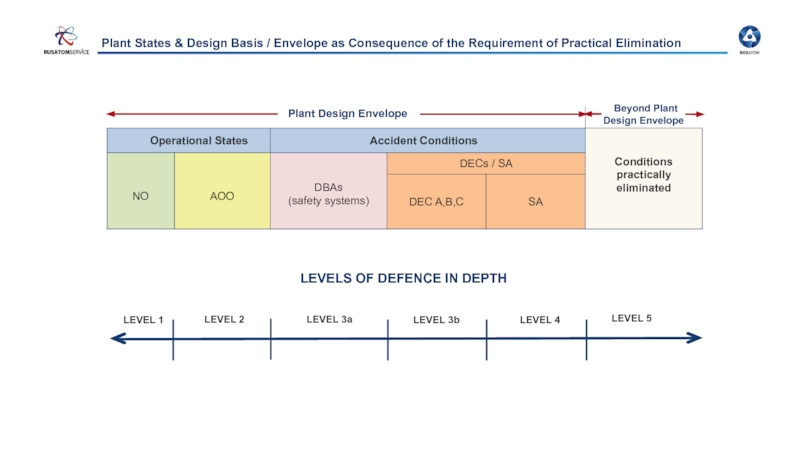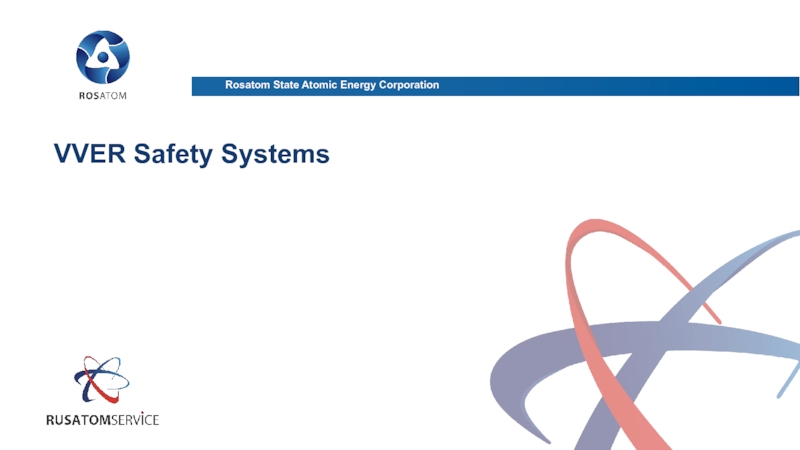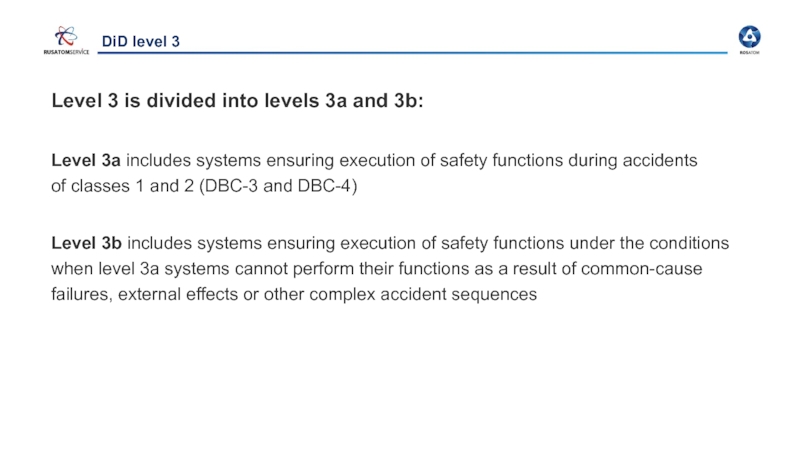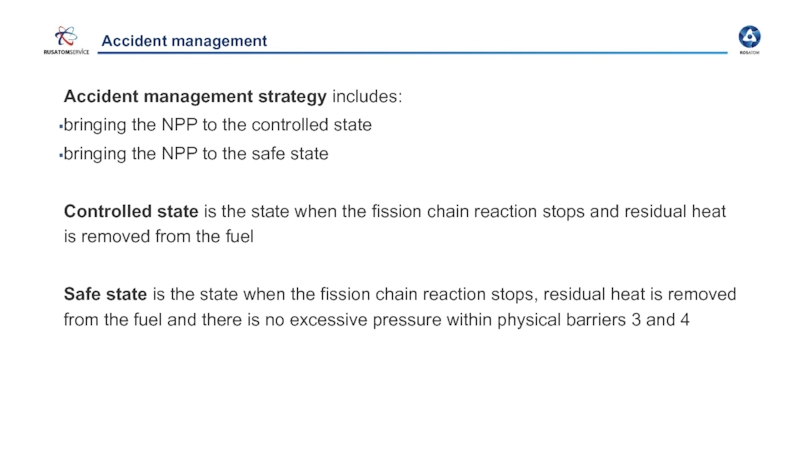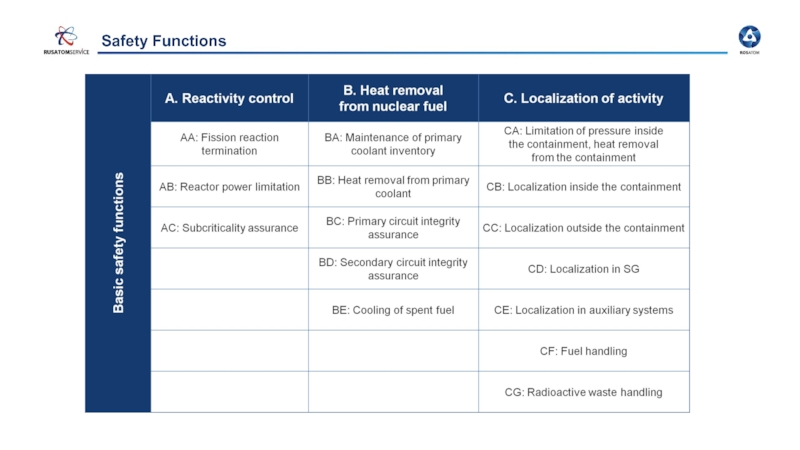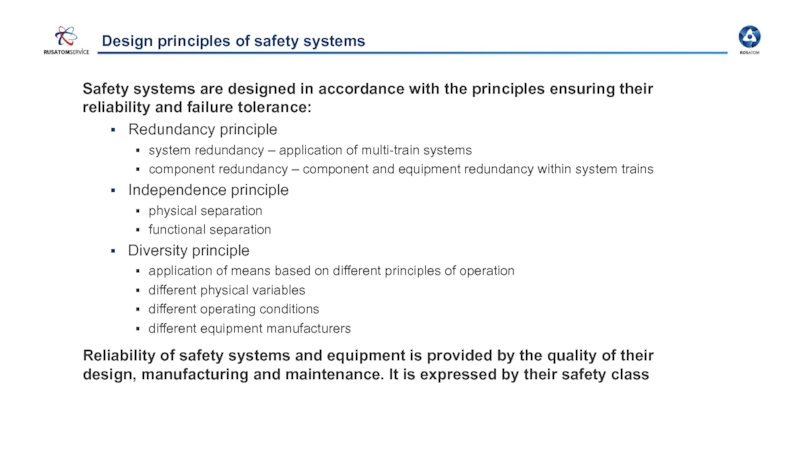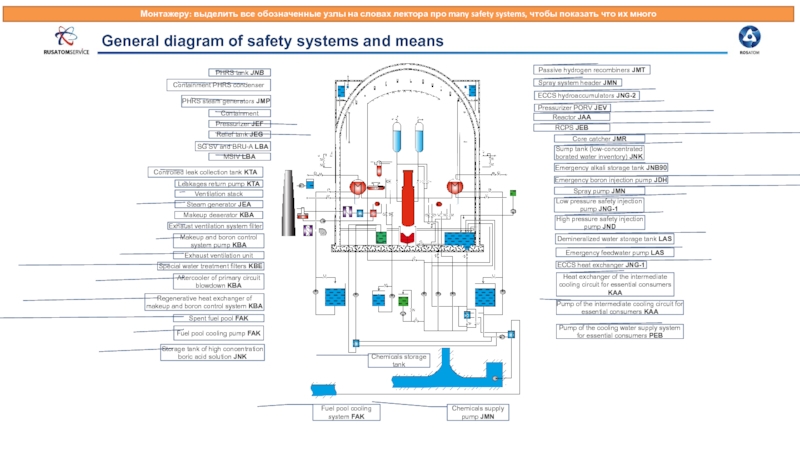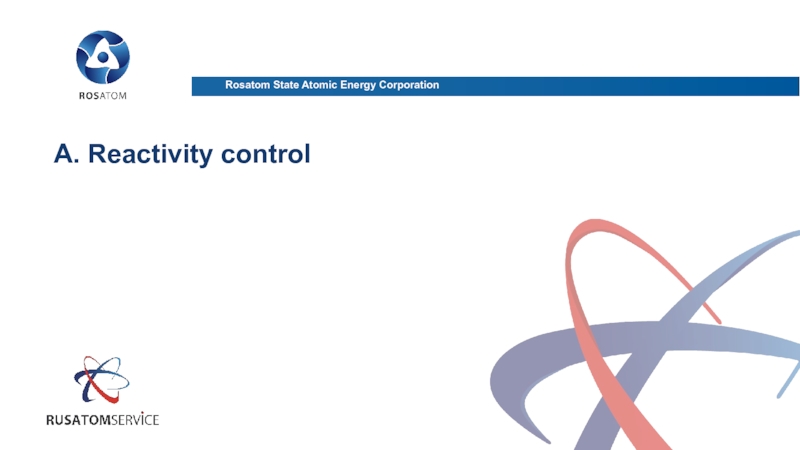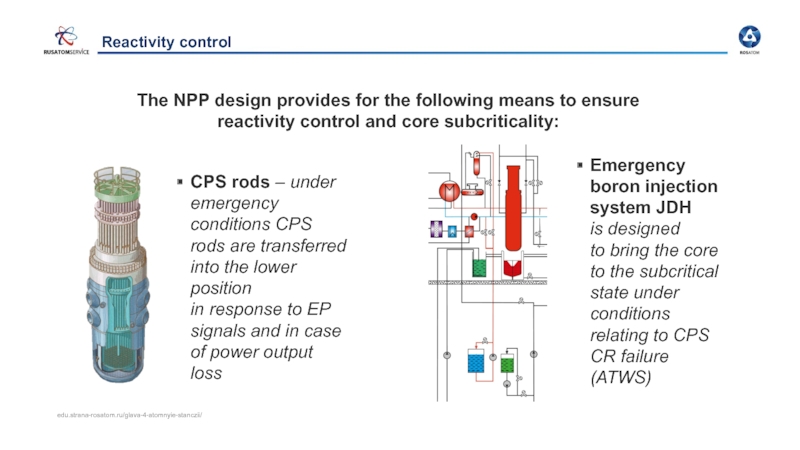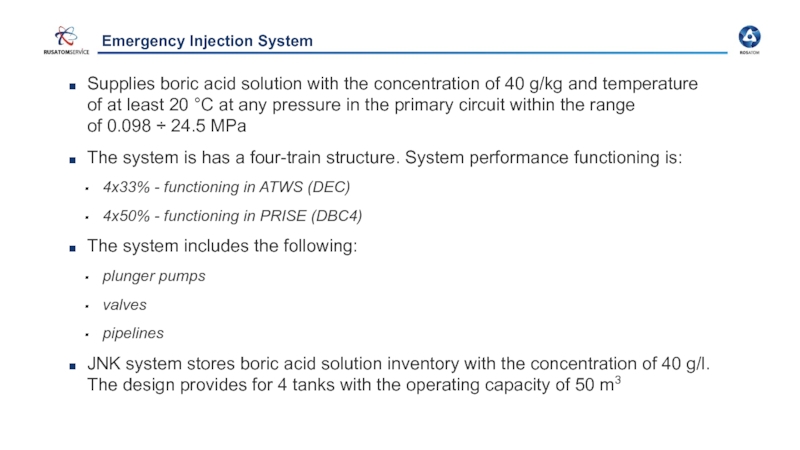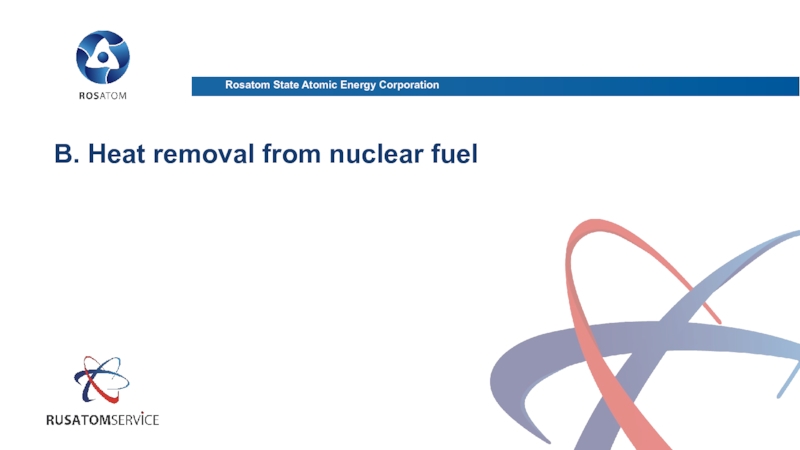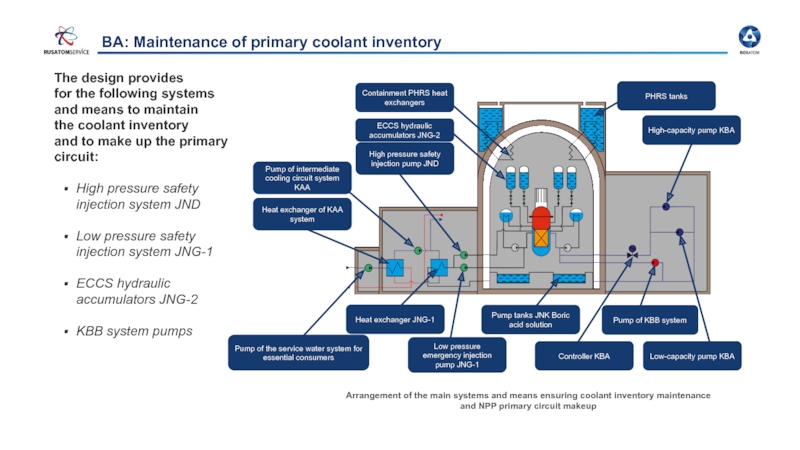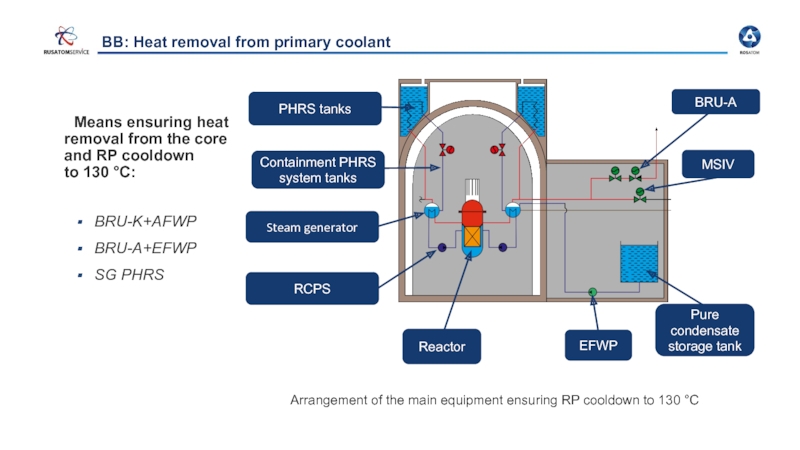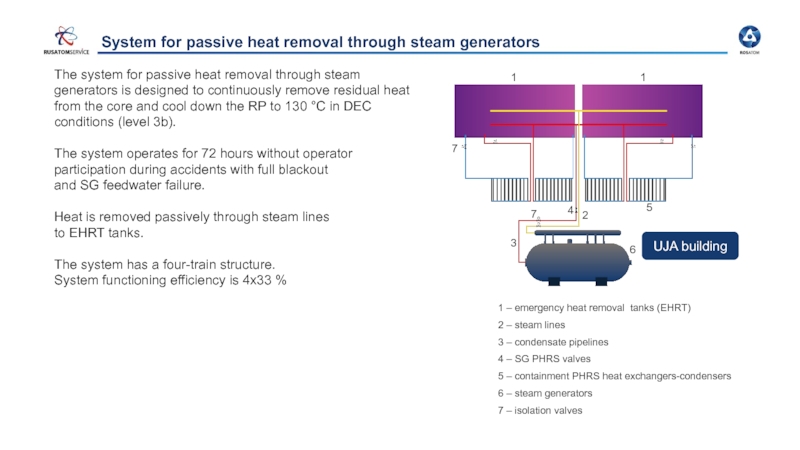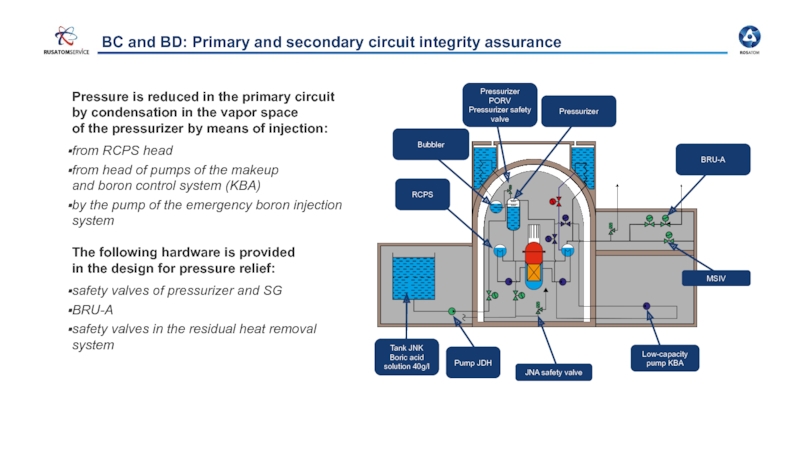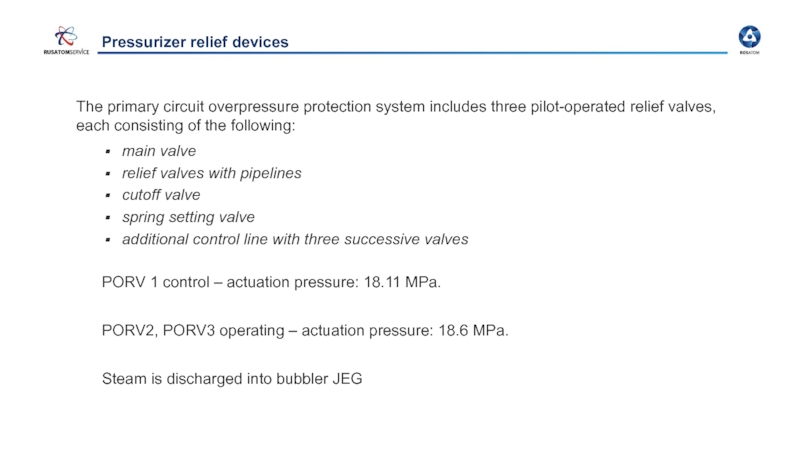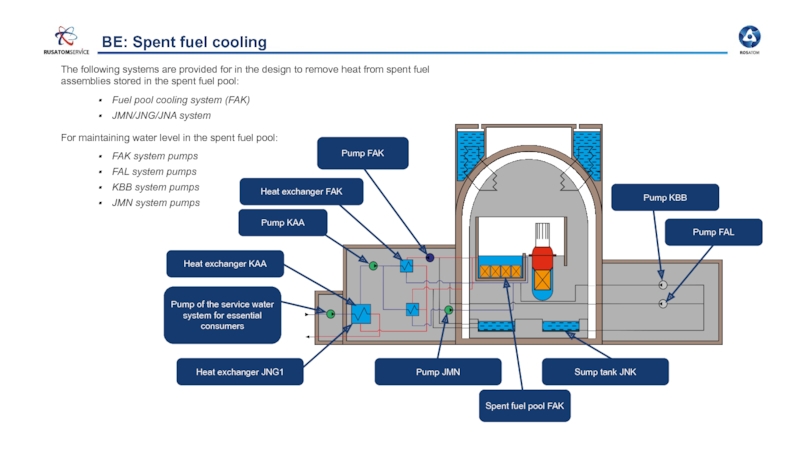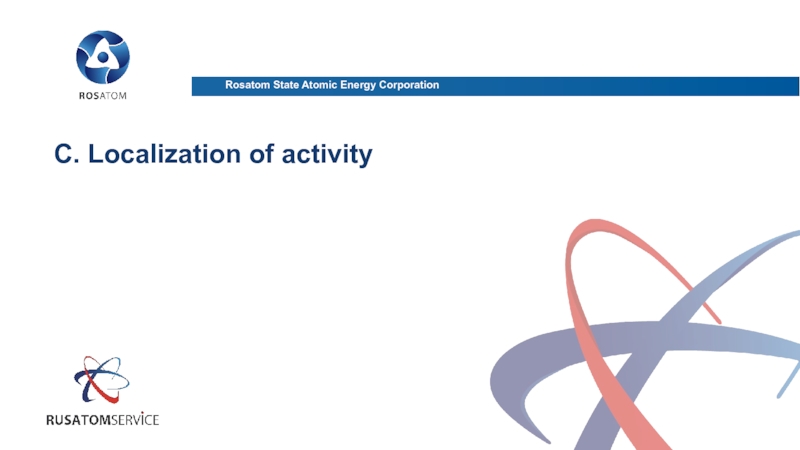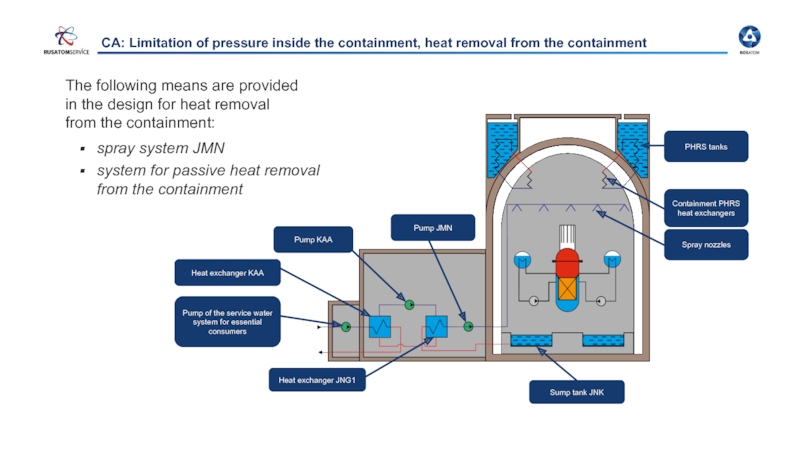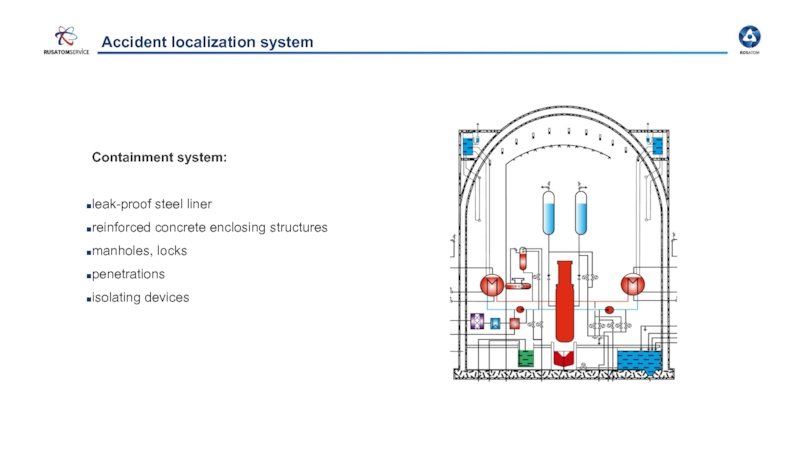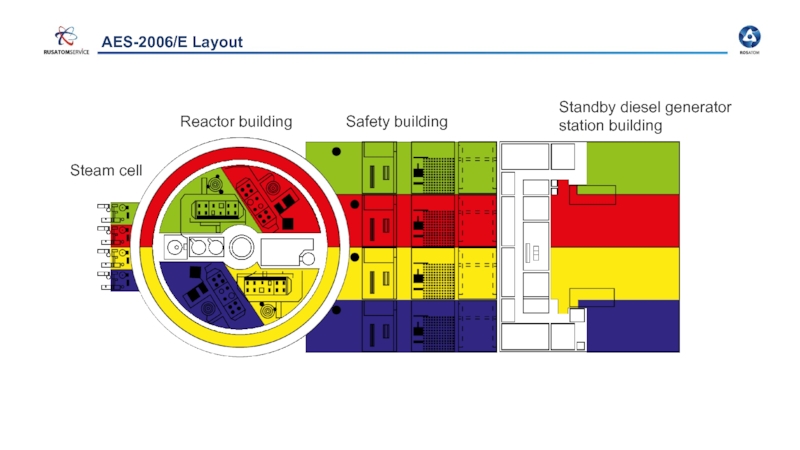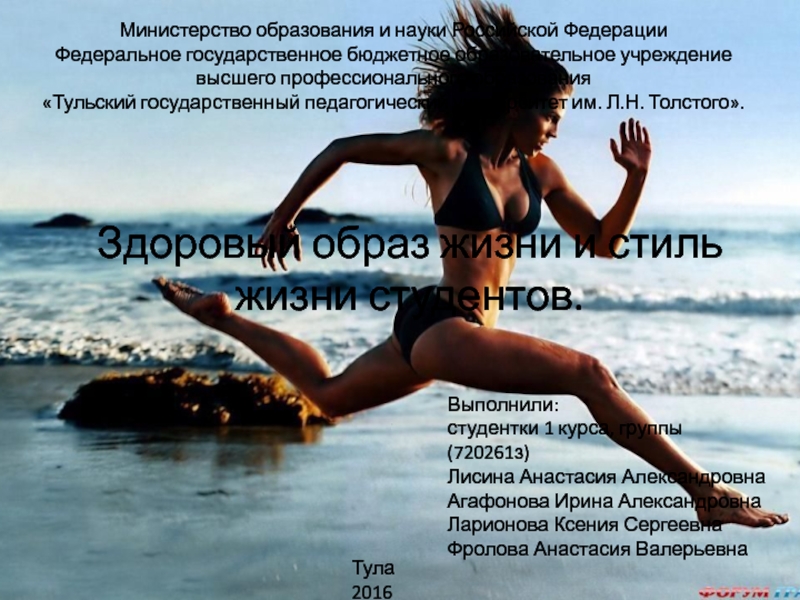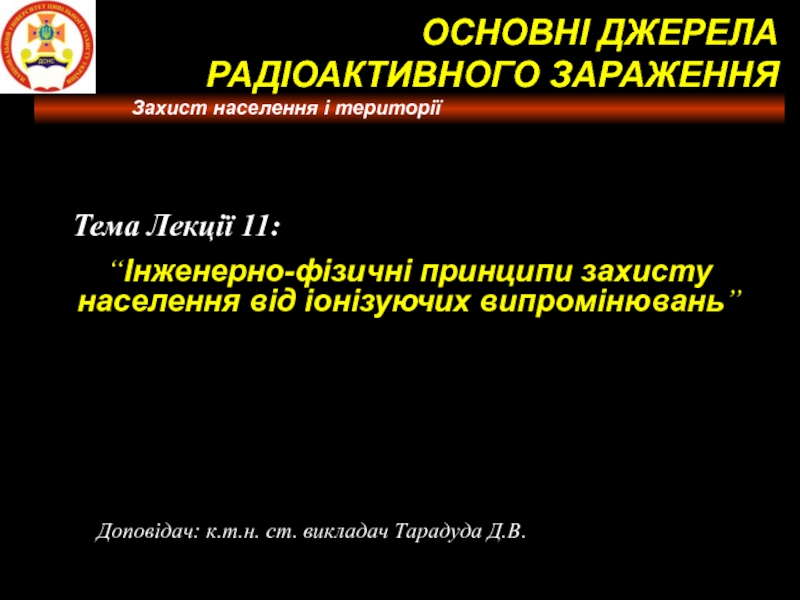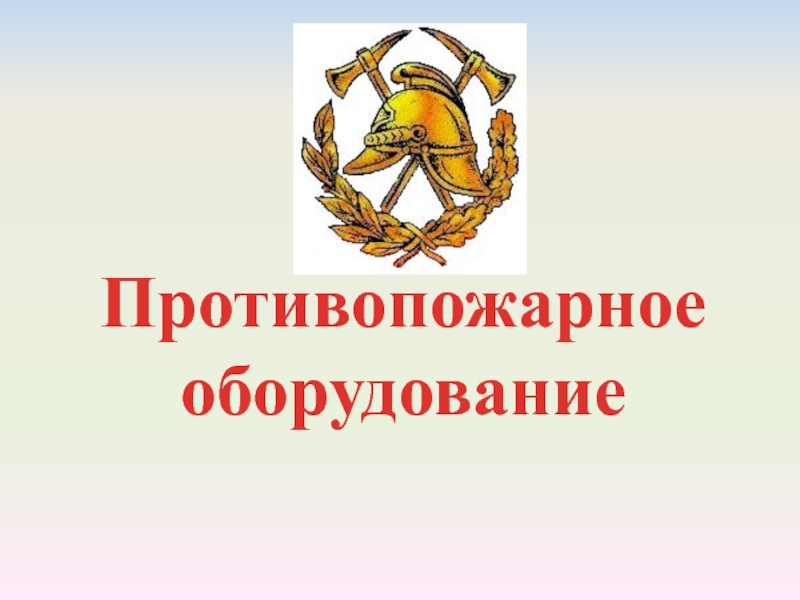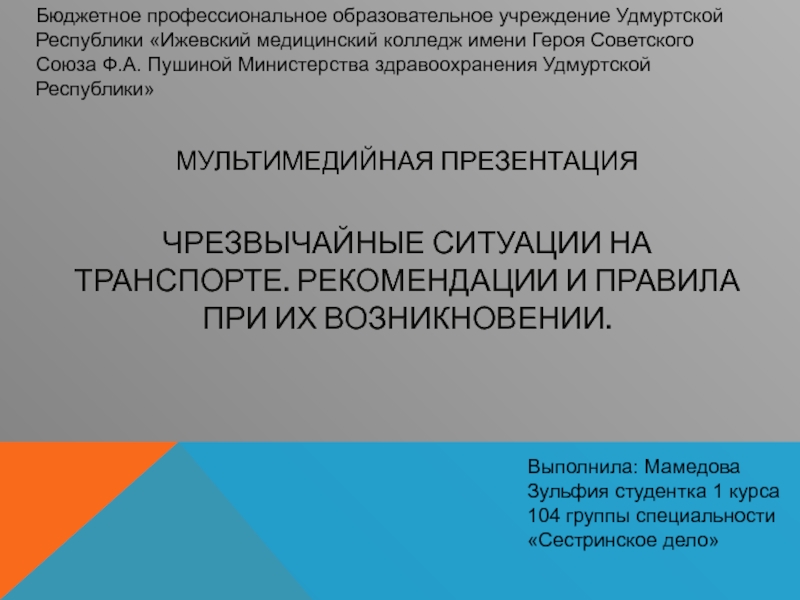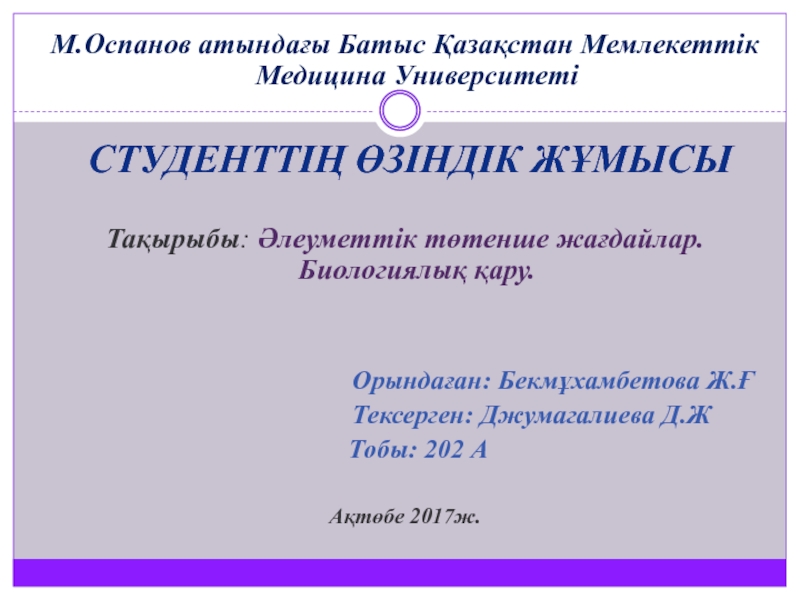- Главная
- Разное
- Дизайн
- Бизнес и предпринимательство
- Аналитика
- Образование
- Развлечения
- Красота и здоровье
- Финансы
- Государство
- Путешествия
- Спорт
- Недвижимость
- Армия
- Графика
- Культурология
- Еда и кулинария
- Лингвистика
- Английский язык
- Астрономия
- Алгебра
- Биология
- География
- Детские презентации
- Информатика
- История
- Литература
- Маркетинг
- Математика
- Медицина
- Менеджмент
- Музыка
- МХК
- Немецкий язык
- ОБЖ
- Обществознание
- Окружающий мир
- Педагогика
- Русский язык
- Технология
- Физика
- Философия
- Химия
- Шаблоны, картинки для презентаций
- Экология
- Экономика
- Юриспруденция
Safety Fundamentals for NPPs презентация
Содержание
- 1. Safety Fundamentals for NPPs
- 2. Training Objectives Terminal Training Objectives: To list
- 3. Content Safety fundamentals for NPPs Design and
- 4. Safety Fundamentals for NPPs
- 5. Definition of «Safety»
- 6. Definition of «Safety» IV. Safety –
- 7. Major Industrial Disasters Devastating series of
- 8. Responsibility The organisation operating a nuclear power
- 9. Design and Safety Functions
- 10. Prevention Control of anticipated operational occurrences
- 11. Physical barriers system Barrier 1 Barrier 2
- 12. DiD Principle Defense-in-depth is a philosophy to ensure nuclear safety
- 13. Design Basis Conditions (DBC) and Design Extension
- 14. In accordance with Gov. Decree 717/2013 (and
- 15. Plant Design Envelope
- 16. Fundamental Safety Functions Conditions Functions
- 17. VVER Safety Systems
- 18. DiD level 3 Level 3 is divided into levels
- 19. Accident management Accident management strategy includes: bringing
- 20. Safety Functions Basic safety functions
- 21. Design principles of safety systems Safety systems
- 22. General diagram of safety systems and means
- 23. A. Reactivity control
- 24. Reactivity control Emergency boron injection system JDH
- 25. Emergency Injection System Supplies boric acid solution
- 26. B. Heat removal from nuclear fuel
- 27. BA: Maintenance of primary coolant inventory The
- 28. BB: Heat removal from primary coolant
- 29. System for passive heat removal through steam
- 30. BC and BD: Primary and secondary circuit
- 31. Pressurizer relief devices The primary circuit overpressure
- 32. BE: Spent fuel cooling The following systems
- 33. C. Localization of activity
- 34. CA: Limitation of pressure inside the containment,
- 35. Accident localization system Containment system: leak-proof
- 36. AES-2006/E Layout Steam cell Reactor building Safety building Standby diesel generator station building
- 37. Thank you for your attention!
Слайд 2Training Objectives
Terminal Training Objectives:
To list the safety systems used to carry
To list the AES-2006/E safety systems used in Hanhikivi-1 NPP
Enabling Training Objectives:
To familiarize trainees with the basic requirements and nuclear safety approaches implementation in the AES-2006/E
To describe the defence-in-depth concept implementation for AES-2006/E
To list the VVER safety systems
To describe the principles of safety system operation of the NPP with VVER
Слайд 3Content
Safety fundamentals for NPPs
Design and Safety Functions
VVER Safety Systems
A. Reactivity control
B.
C. Localization of activity
Слайд 5Definition of «Safety»
I. Safety is the state of being "safe"
II. “Safety” means the protection of people and the environment against radiation risks, and the safety of facilities and activities that give rise to radiation risks. “Safety” as used here and in the IAEA safety standards includes the safety of nuclear installations, radiation safety, the safety of radioactive waste management and safety in the transport of radioactive material; it does not include non-radiation-related aspects of safety. [IAEA]
III. [Nuclear] safety
The achievement of proper operating conditions, prevention of accidents
or mitigation of accident consequences, resulting in protection of workers,
the public and the environment from undue radiation hazards. [IAEA]
Слайд 6Definition of «Safety»
IV. Safety – the condition of being protected
V. Safety is a property of nuclear power plants to provide reliable protection
of personnel, the public and the environment from the unacceptable radiation exposure
in accordance with federal norms and rules in the use of atomic energy. [www.rosatom.ru]
VI. Safety – the use of nuclear energy must be safe; it shall not cause injury to people,
or damage to the environment or property. [Finland, Nuclear Energy Act 11.12.1987/990. Section 6 – Safety]
Слайд 7Major Industrial Disasters
Devastating series of explosions and fire
in Pasadena,
An accident at the pesticide plant in Bhopal, India, released at least 30 tons of a highly toxic gas. The plant was surrounded by shanty towns, leading to more than 600,000 people being exposed to the deadly gas cloud that night
Deaths: At least 3,787; over 16,000 claimed
Non-fatal injuries: At least 558,125
Top 20 accidents with the highest total cost
Слайд 8Responsibility
The organisation operating a nuclear power plant shall be responsible for
Personnel shall be encouraged to perform responsible work, and to identify, report, and eliminate factors endangering safety. Personnel shall be given the opportunity to contribute to the continuous improvement of safety
SAHARA principle – safety as high as reasonably achievable
Слайд 10Prevention
Control
of anticipated operational occurrences
Defense-in-Depth: Five Successive Levels of Protection
Safety levels
Control
Containment
of radioactivity release during
a severe accident
Mitigation
of consequences
Слайд 11Physical barriers system
Barrier 1
Barrier 2
Barrier 3
Barrier 4
Fuel pellet
Fuel element cladding
Reactor and
circuit system
Containment
PREVENT THE RELEASE
of nuclides generated in the fission process
of fission products from zirconium tubes
of fission products from RPV and primary coolant
Prevents releases of radioactive substances
Protects against external effects
Biological radiation shielding
rosatom.ru/about-nuclear-industry/safety-russian-npp/index.php?sphrase_id=145794
Слайд 13Design Basis Conditions (DBC) and Design Extension Conditions (DEC)
In the deterministic
*) DBA – Design Basis Accident
CCF – Common Cause Failure events
EEI – Extremely External Impacts
Acceptance criteria for each category of design conditions
Safety analysis to justify the acceptance criteria
www.iaea.org/INPRO/7th_Dialogue_Forum/Rosatom_1.pdf
Слайд 14In accordance with Gov. Decree 717/2013 (and then YVL C.3) in
DBC-3 – effective dose below 1 mSv
DBC-4 – effective dose below 5 mSv
DEC – effective dose below 20 mSv
Acceptance Criteria
Activity release into containment atmosphere under LOCA accidents is ever determined by presence
of damaged fuel cladding in the core. The following acceptance criteria are justified in the design:
For DBC-3 – the number of damaged fuel rods shall not exceed 1% of the total number
of fuel rods in the core
For DBC-4 –the number of damaged fuel rods shall not exceed 10% of the total number
of fuel rods in the core
Severe accidents:
Not more then 100 TBq for atmospheric releases of Cs-137. No large scale protective measures for the population nor any long-term restrictions on the use of extensive areas of land and water are required. Evacuation of people living in close proximity to the NPP is not required
Слайд 15
Plant Design Envelope
Beyond Plant Design Envelope
LEVEL 1
LEVEL 2
LEVEL 5
LEVELS OF DEFENCE
LEVEL 3a
LEVEL 4
Plant States & Design Basis / Envelope as Consequence of the Requirement of Practical Elimination
LEVEL 3b
Слайд 16Fundamental Safety Functions
Conditions
Functions
Operational plant states
During and after any design basis
In emergency conditions arising in the case of beyond design basis accidents
Control of reactivity
Removal of heat from the reactor
Confinement of radioactive material, shielding against radiation and control of planned radioactive releases, as well as limitation of accidental radioactive releases
Слайд 18DiD level 3
Level 3 is divided into levels 3a and 3b:
Level 3a includes systems
Level 3b includes systems ensuring execution of safety functions under the conditions when level 3a systems cannot perform their functions as a result of common-cause failures, external effects or other complex accident sequences
Слайд 19Accident management
Accident management strategy includes:
bringing the NPP to the controlled state
bringing
Controlled state is the state when the fission chain reaction stops and residual heat is removed from the fuel
Safe state is the state when the fission chain reaction stops, residual heat is removed from the fuel and there is no excessive pressure within physical barriers 3 and 4
Слайд 21Design principles of safety systems
Safety systems are designed in accordance with
Redundancy principle
system redundancy – application of multi-train systems
component redundancy – component and equipment redundancy within system trains
Independence principle
physical separation
functional separation
Diversity principle
application of means based on different principles of operation
different physical variables
different operating conditions
different equipment manufacturers
Reliability of safety systems and equipment is provided by the quality of their design, manufacturing and maintenance. It is expressed by their safety class
Слайд 22General diagram of safety systems and means
PHRS tank JNB
Containment PHRS condenser
Containment
Pressurizer JEF
Relief tank JEG
SG SV and BRU-A LBA
MSIV LBA
Controlled leak collection tank KTA
Leakages return pump KTA
Ventilation stack
Steam generator JEA
Makeup deaerator KBA
Exhaust ventilation system filter
Makeup and boron control system pump KBA
Exhaust ventilation unit
Special water treatment filters KBE
Aftercooler of primary circuit blowdown KBA
Regenerative heat exchanger of makeup and boron control system KBA
Fuel pool cooling pump FAK
Storage tank of high concentration boric acid solution JNK
Spent fuel pool FAK
Passive hydrogen recombiners JMT
Spray system header JMN
ECCS hydroaccumulators JNG-2
Pump of the cooling water supply system for essential consumers PEB
Pump of the intermediate cooling circuit for essential consumers KAA
Heat exchanger of the intermediate cooling circuit for essential consumers KAA
ECCS heat exchanger JNG-1
Emergency feedwater pump LAS
Demineralized water storage tank LAS
High pressure safety injection pump JND
Low pressure safety injection pump JNG-1
Chemicals storage tank
Chemicals supply pump JMN
Spray pump JMN
Fuel pool cooling system FAK
Emergency boron injection pump JDH
Emergency alkali storage tank JNB90
Sump tank (low-concentrated borated water inventory) JNK
Core catcher JMR
Reactor JAA
RCPS JEB
Pressurizer PORV JEV
PHRS steam generators JMP
Монтажеру: выделить все обозначенные узлы на словах лектора про many safety systems, чтобы показать что их много
Слайд 24Reactivity control
Emergency boron injection system JDH
is designed
to bring the
CPS rods – under emergency conditions CPS rods are transferred into the lower position
in response to EP signals and in case of power output loss
The NPP design provides for the following means to ensure reactivity control and core subcriticality:
edu.strana-rosatom.ru/glava-4-atomnyie-stanczii/
Слайд 25Emergency Injection System
Supplies boric acid solution with the concentration of 40 g/kg
The system is has a four-train structure. System performance functioning is:
4x33% - functioning in ATWS (DEC)
4x50% - functioning in PRISE (DBC4)
The system includes the following:
plunger pumps
valves
pipelines
JNK system stores boric acid solution inventory with the concentration of 40 g/l. The design provides for 4 tanks with the operating capacity of 50 m3
Слайд 27BA: Maintenance of primary coolant inventory
The design provides
for the following
High pressure safety injection system JND
Low pressure safety injection system JNG-1
ECCS hydraulic accumulators JNG-2
KBB system pumps
Containment PHRS heat exchangers
ECCS hydraulic accumulators JNG-2
High pressure safety injection pump JND
Pump of intermediate cooling circuit system KAA
Heat exchanger of KAA system
PHRS tanks
High-capacity pump KBA
Low-capacity pump KBA
Controller KBA
Arrangement of the main systems and means ensuring coolant inventory maintenance
and NPP primary circuit makeup
Pump of the service water system for essential consumers
Heat exchanger JNG-1
Pump tanks JNK Boric acid solution
Low pressure emergency injection pump JNG-1
Pump of KBB system
Слайд 28BB: Heat removal from primary coolant
Means ensuring heat removal from
BRU-K+AFWP
BRU-A+EFWP
SG PHRS
Arrangement of the main equipment ensuring RP cooldown to 130 °C
Containment PHRS system tanks
PHRS tanks
Steam generator
MSIV
BRU-A
Pure condensate storage tank
EFWP
Reactor
RCPS
Слайд 29System for passive heat removal through steam generators
The system for passive
The system operates for 72 hours without operator participation during accidents with full blackout and SG feedwater failure.
Heat is removed passively through steam lines to EHRT tanks.
The system has a four-train structure. System functioning efficiency is 4x33 %
1 – emergency heat removal tanks (EHRT)
2 – steam lines
3 – condensate pipelines
4 – SG PHRS valves
5 – containment PHRS heat exchangers-condensers
6 – steam generators
7 – isolation valves
1
1
2
4
5
3
6
7
UJA building
7
Слайд 30BC and BD: Primary and secondary circuit integrity assurance
Pressure is reduced
from RCPS head
from head of pumps of the makeup and boron control system (KBA)
by the pump of the emergency boron injection system
The following hardware is provided in the design for pressure relief:
safety valves of pressurizer and SG
BRU-A
safety valves in the residual heat removal system
Pressurizer PORV Pressurizer safety valve
Pressurizer
BRU-A
Bubbler
Tank JNK Boric acid solution 40g/l
RCPS
Pump JDH
MSIV
Low-capacity pump KBA
JNA safety valve
Слайд 31Pressurizer relief devices
The primary circuit overpressure protection system includes three pilot-operated
main valve
relief valves with pipelines
cutoff valve
spring setting valve
additional control line with three successive valves
PORV 1 control – actuation pressure: 18.11 MPa.
PORV2, PORV3 operating – actuation pressure: 18.6 MPa.
Steam is discharged into bubbler JEG
Слайд 32BE: Spent fuel cooling
The following systems are provided for in the
Fuel pool cooling system (FAK)
JMN/JNG/JNA system
For maintaining water level in the spent fuel pool:
FAK system pumps
FAL system pumps
KBB system pumps
JMN system pumps
Pump FAK
Heat exchanger FAK
Pump KAA
Heat exchanger KAA
Pump of the service water system for essential consumers
Heat exchanger JNG1
Pump JMN
Sump tank JNK
Pump KBB
Pump FAL
Spent fuel pool FAK
Слайд 34CA: Limitation of pressure inside the containment, heat removal from the
Pump KAA
Pump JMN
PHRS tanks
Containment PHRS heat exchangers
Spray nozzles
Heat exchanger JNG1
Heat exchanger KAA
The following means are provided
in the design for heat removal
from the containment:
spray system JMN
system for passive heat removal from the containment
Pump of the service water system for essential consumers
Sump tank JNK
